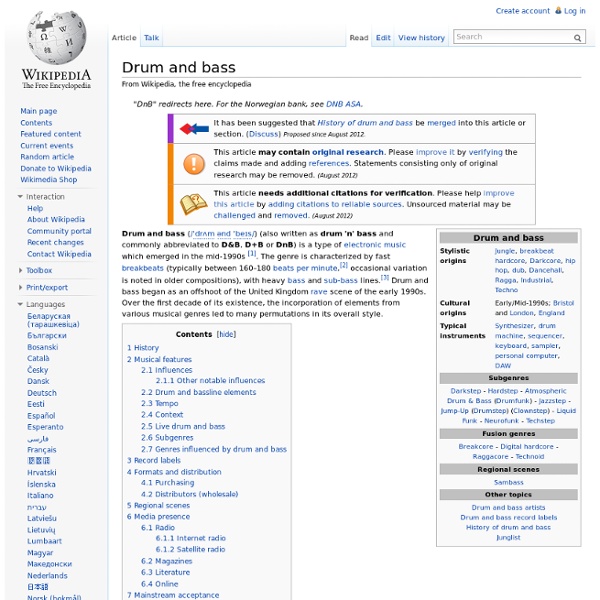Drum and bass

Minimal techno
Origins[edit] Robert Hood describes the situation in the early 1990s as one where techno had become too "ravey", with increasing tempos leading to the emergence of gabber. Such trends saw the demise of the soul infused techno that typified the original Detroit sound. Robert Hood has noted that he and Daniel Bell both realized something was missing from techno in the post-rave era, and saw that an important feature of the original techno sound has been lost. The minimal techno sound that emerged at this time has been defined by Robert Hood as: "a basic stripped down, raw sound. In Audio Culture: Readings in Modern Music (2004), music journalist Philip Sherburne states that, like most contemporary electronic dance music, minimal techno has its roots in the landmark works of pioneers such as Kraftwerk and Detroit Techno's Derrick May and Juan Atkins. Style[edit] The average tempo of a minimal techno track is between 125 and 130 beats per minute. Development[edit] See also[edit]
Related:
Related:



